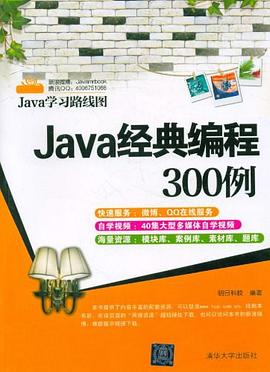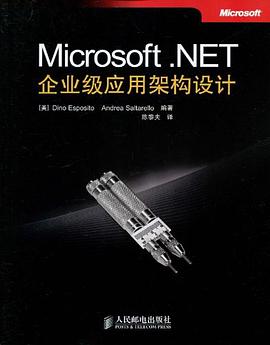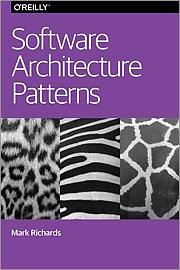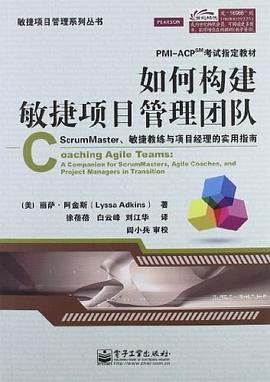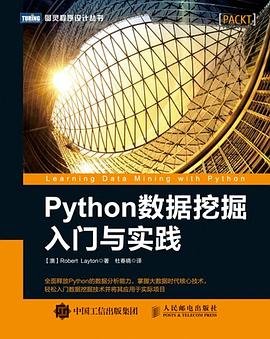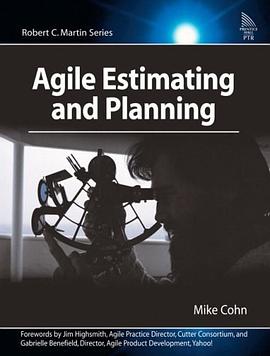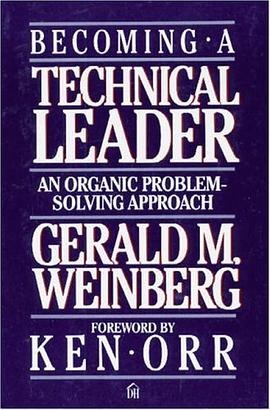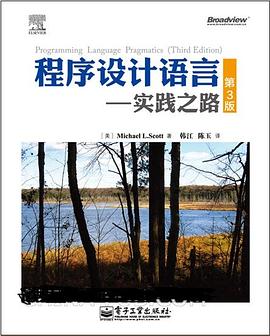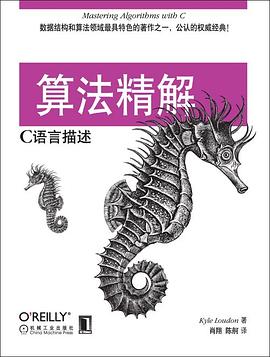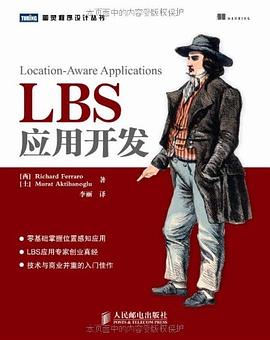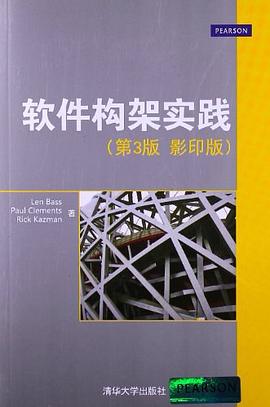

具體描述
《軟件構架實踐(第3版•影印版)》是一本榮獲大奬且影響深遠的經典,目前已經全麵修訂,充分體現瞭這一領域的最新進展。基於軟件開發的真實現狀,《軟件構架實踐(第3版•影印版)》再次以全新的角度引入軟件構架的相關概念和最佳實踐,闡述軟件係統是如何架構的,軟件係統中的各個要素之間又是如何相互作用的。有彆於實現細節、算法和數據錶示,軟件構架是達成高品質軟件的關鍵,是一種可重用於後續軟件係統的資産,對軟件企業的商業策略至關重要。作者圍繞著軟件構架影響周期的概念對《軟件構架實踐(第3版•影印版)》前一版進行瞭重構。每個周期都錶明瞭軟件構架是如何産生影響的,同時它又受哪些因素的影響。軟件構架在特定的背景下發揮著關鍵性的作用。這些背景包括技術環境、項目的生命周期、組織的業務概況和架構師的專業實踐。作者還進一步延展瞭質量屬性,仍然以構架理念為中心(用單獨—章內容來專門介紹每個屬性),進一步拓寬瞭軟件構架模式。
著者簡介
Len Bass:澳大利亞國傢信息通信技術研究院(NICTA)的高級主任研究員。在此之前,他在卡內基·梅隆大學軟件工程研究所(SEI)工作瞭二十五年。
Paul Clements:BigLever Software公司的副總裁,其職責是幫助客戶獲得成功。他在SEI的時候,主持的項目主要涉及軟件産品綫工程和軟件構架編檔與分析。
Rick Kazman:美國夏威夷大學的教授和SEI的訪問科學傢。
圖書目錄
reader’s guide xvii
acknowledgments xix
part one: introduction
chapter 1: what is software architecture?
1.1 what software architecture is and what it isn’t
1.2 architectural structures and views
1.3 architectural patterns
1.4 what makes a “good” architecture?
1.5 summary
1.6 for further reading
1.7 discussion questions
chapter 2: why is software architecture important?
2.1 inhibiting or enabling a system’s quality attributes
2.2 reasoning about and managing change
2.3 predicting system qualities
2.4 enhancing communication among stakeholders
2.5 carrying early design decisions
2.6 defining constraints on an implementation
.2.7 influencing the organizational structure
2.8 enabling evolutionary prototyping
2.9 improving cost and schedule estimates
2.10 supplying a transferable, reusable model
2.11 allowing incorporation of independently developedcomponents
2.12 restricting the vocabulary of design alternatives
2.13 providing a basis for training
2.14 summary
2.15 for further reading
2.16 discussion questions
chapter 3: the many contexts of software architecture
3.1 architecture in a technical context
3.2 architecture in a project life-cycle context
3.3 architecture in a business context
3.4 architecture in a professional context
3.5 stakeholders
3.6 how is architecture influenced?
3.7 what do architectures influence?
3.8 summary
3.9 for further reading
3.10 discussion questions
part two: quality attributes
chapter 4: understanding quality attributes
4.1 architecture and requirements
4.2 functionality
4.3 quality attribute considerations
4.4 specifying quality attribute requirements
4.5 achieving quality attributes through tactics
4.6 guiding quality design decisions
4.7 summary
4.8 for further reading
4.9 discussion questions
chapter 5: availability
5.1 availability general scenario
5.2 tactics for availability
5.3 a design checklist for availability
5.4 summary
5.5 for further reading
5.6 discussion questions
chapter 6: interoperability
6.1 interoperability general scenario
6.2 tactics for interoperability
6.3 a design checklist for interoperability
6.4 summary
6.5 for further reading
6.6 discussion questions
chapter 7: modifiability
7.1 modifiability general scenario
7.2 tactics for modifiability
7.3 a design checklist for modifiability
7.4 summary
7.5 for further reading
7.6 discussion questions
chapter 8: performance
8.1 performance general scenario
8.2 tactics for performance
8.3 a design checklist for performance
8.4 summary
8.5 for further reading
8.6 discussion questions
chapter 9: security
9.1 security general scenario
9.2 tactics for security
9.3 a design checklist for security
9.4 summary
9.5 for further reading
9.6 discussion questions
chapter 10: testability
10.1 testability general scenario
10.2 tactics for testability
10.3 a design checklist for testability
10.4 summary
10.5 for further reading
10.6 discussion questions
chapter 11: usability
11.1 usability general scenario
11.2 tactics for usability
11.3 a design checklist for usability
11.4 summary
11.5 for further reading
11.6 discussion questions
chapter 12: other quality attributes
12.1 other important quality attributes
12.2 other categories of quality attributes
12.3 software quality attributes and system qualityattributes
12.4 using standard lists of quality attributes–or not
12.5 dealing with “x-ability”: bringing a new quality attributeinto the fold
12.6 for further reading
12.7 discussion questions
chapter 13: architectural tactics and patterns
13.1 architectural patterns
13.2 overview of the patterns catalog
13.3 relationships between tactics and patterns
13.4 using tactics together
13.5 summary
13.6 for further reading
13.7 discussion questions
chapter 14: quality attribute modeling and analysis
14.1 modeling architectures to enable quality attributeanalysis
14.2 quality attribute checklists
14.3 thought experiments and back-of-the-envelope analysis
14.4 experiments, simulations, and prototypes
14.5 analysis at different stages of the life cycle
14.6 summary
14.7 for further reading
14.8 discussion questions
part three: architecture in the life cycle
chapter 15: architecture in agile projects
15.1 how much architecture?
15.2 agility and architecture methods
15.3 a brief example of agile architecting
15.4 guidelines for the agile architect
15.5 summary
15.6 for further reading
15.7 discussion questions
chapter 16: architecture and requirements
16.1 gathering asrs from requirements documents
16.2 gathering asrs by interviewing stakeholders
16.3 gathering asrs by understanding the business goals
16.4 capturing asrs in a utility tree
16.5 tying the methods together
16.6 summary
16.7 for further reading
16.8 discussion questions
chapter 17: designing an architecture
17.1 design strategy
17.2 the attribute-driven design method
17.3 the steps of add
17.4 summary
17.5 for further reading
17.6 discussion questions
chapter 18: documenting software architectures
18.1 uses and audiences for architecture documentation
18.2 notations for architecture documentation
18.3 views
18.4 choosing the views
18.5 combining views
18.6 building the documentation package
18.7 documenting behavior
18.8 architecture documentation and quality attributes
18.9 documenting architectures that change faster than you candocument them
18.10 documenting architecture in an agile developmentproject
18.11 summary
18.12 for further reading
18.13 discussion questions
chapter 19: architecture, implementation, and testing
19.1 architecture and implementation
19.2 architecture and testing
19.3 summary
19.4 for further reading
19.5 discussion questions
chapter 20: architecture reconstruction and conformance
20.1 architecture reconstruction process
20.2 raw view extraction
20.3 database construction
20.4 view fusion
20.5 architecture analysis: finding violations
20.6 guidelines
20.7 summary
20.8 for further reading
20.9 discussion questions
chapter 21: architecture evaluation
21.1 evaluation factors
21.2 the architecture tradeoff analysis method
21.3 lightweight architecture evaluation
21.4 summary
21.5 for further reading
21.6 discussion questions
chapter 22: management and governance
22.1 planning
22.2 organizing
22.3 implementing
22.4 measuring
22.5 governance
22.6 summary
22.7 for further reading
22.8 discussion questions
part four: architecture and business
chapter 23: economic analysis of architectures
23.1 decision-making context
23.2 the basis for the economic analyses
23.3 putting theory into practice: the cbam
23.4 case study: the nasa ecs project
23.5 summary
23.6 for further reading
23.7 discussion questions
chapter 24: architecture competence
24.1 competence of individuals: duties, skills, and knowledge ofarchitects
24.2 competence of a software architecture organization
24.3 summary
24.4 for further reading
24.5 discussion questions
chapter 25: architecture and software product lines
25.1 an example of product line variability
25.2 what makes a software product line work?
25.3 product line scope
25.4 the quality attribute of variability
25.5 the role of a product line architecture
25.6 variation mechanisms
25.7 evaluating a product line architecture
25.8 key software product line issues
25.9 summary
25.10 for further reading
25.11 discussion questions
part five: the brave new world
chapter 26: architecture in the cloud
26.1 basic cloud definitions
26.2 service models and deployment options
26.3 economic justification
26.4 base mechanisms
26.5 sample technologies
26.6 architecting in a cloud environment
26.7 summary
26.8 for further reading
26.9 discussion questions
chapter 27: architectures for the edge
27.1 the ecosystem of edge-dominant systems
27.2 changes to the software development life cycle
27.3 implications for architecture
27.4 implications of the metropolis model
27.5 summary
27.6 for further reading
27.7 discussion questions
chapter 28: epilogue
references
about the authors
index
· · · · · · (收起)
讀後感
有点啃不动的感觉额,第三章的案例好多术语不理解。再坚持几天看看能否有所突破 mark一下 读到第三章51页了 不过看了看亚马逊的相关内容以及老师的推荐,这本书写的( ^_^ )不错嘛 可能是自己还需要净心读一读了
評分购得的这本书是第二版了,书中内容主要成文于2004年的第一版时期,改动不多,第二版比第一版增加了web方面的软件实践内容。 从亚马逊中搜索软件架构方面的书籍,这本书应该是较为权威的教材书了。相比国内的书籍来说,理论方面的内容较扎实。因为是一本实践类书籍,书...
評分有点啃不动的感觉额,第三章的案例好多术语不理解。再坚持几天看看能否有所突破 mark一下 读到第三章51页了 不过看了看亚马逊的相关内容以及老师的推荐,这本书写的( ^_^ )不错嘛 可能是自己还需要净心读一读了
評分购得的这本书是第二版了,书中内容主要成文于2004年的第一版时期,改动不多,第二版比第一版增加了web方面的软件实践内容。 从亚马逊中搜索软件架构方面的书籍,这本书应该是较为权威的教材书了。相比国内的书籍来说,理论方面的内容较扎实。因为是一本实践类书籍,书...
評分购得的这本书是第二版了,书中内容主要成文于2004年的第一版时期,改动不多,第二版比第一版增加了web方面的软件实践内容。 从亚马逊中搜索软件架构方面的书籍,这本书应该是较为权威的教材书了。相比国内的书籍来说,理论方面的内容较扎实。因为是一本实践类书籍,书...
用戶評價
架構設計是非常繁雜的工作,有很多理論性的東西,要結閤實際的工作經驗來看會比較好。 軟件構架:易修改,安全,可靠;角色:開發者,測試,維護,性能工程師,用戶;技術: 操作係統,硬件,網絡,中間件,需要交互的其他係統,設計模式 架構評估 雲: Saas,Paas,Iaas 等等
评分第三版增加瞭雲架構章節。
评分架構設計是非常繁雜的工作,有很多理論性的東西,要結閤實際的工作經驗來看會比較好。 軟件構架:易修改,安全,可靠;角色:開發者,測試,維護,性能工程師,用戶;技術: 操作係統,硬件,網絡,中間件,需要交互的其他係統,設計模式 架構評估 雲: Saas,Paas,Iaas 等等
评分不得不說第三版比第二版好太多瞭,內容組織有條理瞭很多。但是,第二版中有一些具體案例分析,第三版中都不見瞭,比較可惜。
评分架構設計是非常繁雜的工作,有很多理論性的東西,要結閤實際的工作經驗來看會比較好。 軟件構架:易修改,安全,可靠;角色:開發者,測試,維護,性能工程師,用戶;技術: 操作係統,硬件,網絡,中間件,需要交互的其他係統,設計模式 架構評估 雲: Saas,Paas,Iaas 等等
相關圖書
本站所有內容均為互聯網搜索引擎提供的公開搜索信息,本站不存儲任何數據與內容,任何內容與數據均與本站無關,如有需要請聯繫相關搜索引擎包括但不限於百度,google,bing,sogou 等
© 2025 book.quotespace.org All Rights Reserved. 小美書屋 版权所有

